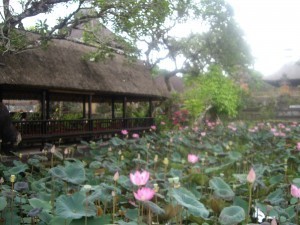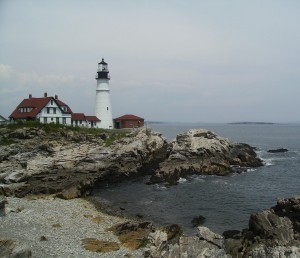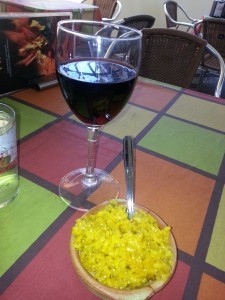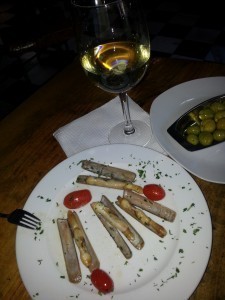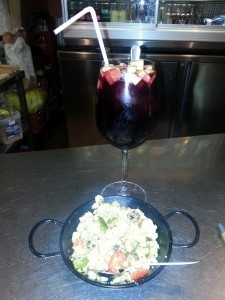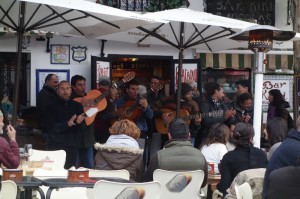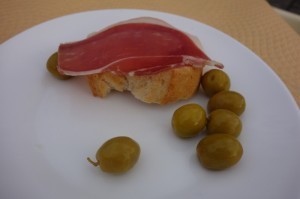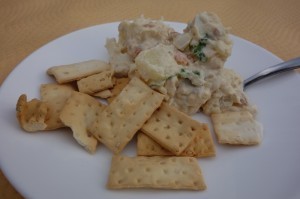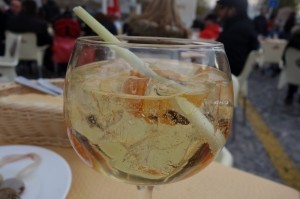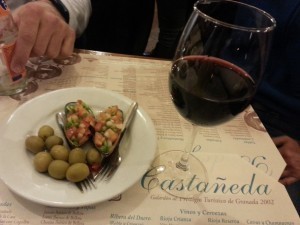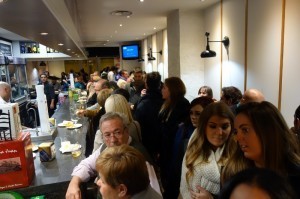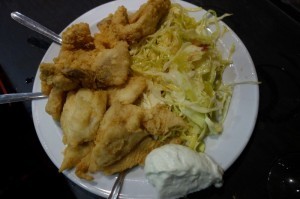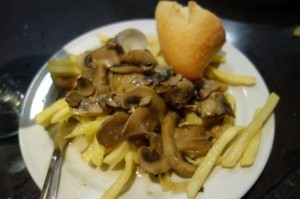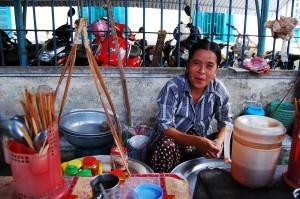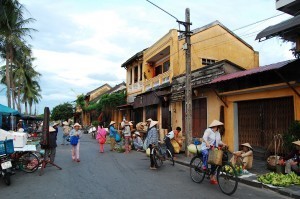Lisa Niver's Blog: We Said Go Travel, page 418
February 21, 2014
Maui, Hawaii: Replenish Your Mana
Join George Kamana Hunter, an Intuitive Healer, in Maui for his workshop Reclaiming Your Vitality in Maui on May 15-18, 2014 at Lemuria Maui.
 It was a cold, brisk morning in Astoria, Queens. I left my NYC apartment 20 minutes late, wearing my long black wool coat to stay warm in the 20 degree weather. The coat made me look like a Rabbi. I hustled to the subway stop, trying to make up time. My commute to Memorial Sloan Kettering Cancer Center was 45 minutes on a good day.
It was a cold, brisk morning in Astoria, Queens. I left my NYC apartment 20 minutes late, wearing my long black wool coat to stay warm in the 20 degree weather. The coat made me look like a Rabbi. I hustled to the subway stop, trying to make up time. My commute to Memorial Sloan Kettering Cancer Center was 45 minutes on a good day.
As I huffed up the subway stairs to the elevated train platform, I spilled my hot coffee on my black leather gloves. It burned, then it felt good just before the icy wind chilled my wet hand. When I finally plopped down in the subway car, I was grateful to get a seat.
I looked at my reflection in the shiny steel of the subway car and noticed deep grooves beneath my eyes. My face was pale and I looked depleted. Luckily, everyone else in the subway car looked the same way, so I blended. My chapped lips eagerly sipped the hot coffee, revealing my caffeine addiction. Getting up in the morning had become impossible without my a hot cup of joe.
The advertisements in the subway car showed photos of far off white sandy beaches and crystal blue waters. Even in the summertime, the beaches of Long Island did not look that pretty. It made me yearn to be in the warm sun and to feel flower scented breezes touch my face. I had no clue that I was catching a glimpse of my future travels.
Seven years later, I came to Oahu for my birthday to visit a good friend Kimo. He was a Native Hawaiian lei maker with a bubbly laugh. At the airport, Kimo placed a puakenikeni lei around my neck. The remarkably scented flowers were grown in his yard in Kaneohe. When he took me to Kailua Beach, I felt a rush of mana, that vital life force of Hawaii, filling every cell of my body. The ocean water cleansed me, wiping away the dirty subway cars and the bad attitudes of people stuck in traffic. My body was like a race car engine that had been driven so hard that exhaust steamed from my pores when the waves hit me. The surge of mana from the land, water, and flowers replenished my body and lifted my spirits.
I did not know that life could feel this good. It showed me how I had forgotten how to receive life’s bounty. Growing up in the New York City area, I had not experienced this intense rejuvenation that made the insides of my bones tingle with joy. Every tropical flower reminded me of the abundance of life. Each time I breathed, I was renewed.
After my birthday experience, I learned how to rejuvenate myself. The visit had such a powerful impact on me that I moved to Hawaii! Since my move, I had become a trusted guide for weary travelers who want to experience the miraculous revitalization that I received in Hawaii. I welcome people with leis. I guide newcomers to the beautiful, high energy places which refuel their tired bones. I help them remember how generous life can really be.
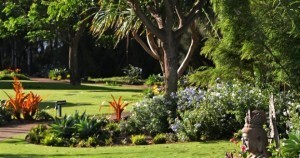 Hawaii has taught me to generously share what I have discovered, as I will do at my workshop Reclaiming Your Vitality in Maui on May 15th-18th at Lemuria Maui. My workshop will give you a chance to revitalize using the 4 elements of Hawaii: earth, ocean, wind, and the fire of passionate empathy. Participate in an ocean cleansing ceremony to cleanse your heart and mind of toxic feelings. Refresh your ability to connect with other people in a safe environment. Explore Hawaii Teachings around healing, forgiveness, and celebration. Value yourself, by giving yourself the gift of this luscious sanctuary.
Hawaii has taught me to generously share what I have discovered, as I will do at my workshop Reclaiming Your Vitality in Maui on May 15th-18th at Lemuria Maui. My workshop will give you a chance to revitalize using the 4 elements of Hawaii: earth, ocean, wind, and the fire of passionate empathy. Participate in an ocean cleansing ceremony to cleanse your heart and mind of toxic feelings. Refresh your ability to connect with other people in a safe environment. Explore Hawaii Teachings around healing, forgiveness, and celebration. Value yourself, by giving yourself the gift of this luscious sanctuary.
Join George Kamana Hunter, an Intuitive Healer, in Maui for his workshop Reclaiming Your Vitality in Maui on May 15-18, 2014 at Lemuria Maui.
The post Maui, Hawaii: Replenish Your Mana appeared first on We Said Go Travel.
No Lying in Indonesia
At the Water Palace restaurant we sit cross-legged on cushions on a raised platform. A sign at my side says, Please, for the comfort of others, no lying.
And I’m not lying when I say I haven’t felt so relaxed in years. At home I swim, walk and do yoga to stay sane and flexible. I take baths to soothe aching limbs, a stiff neck and anything else that needs doing. In Ubud, yoga retreats, massages and herbal baths abound. I just don’t need them.
After our honest lunch during which my son drank three mango juices – he’s fourteen and apparently bottomless – we retrace our steps some metres and turn left into Jalan Kajeng. The lane tapers upwards. There are no taxis and few motorbikes, no pieces of footpath upheaving like tectonic plates. Paving stones are carved with messages by previous tourists. We love you, Bali! Jan and Macca.
We walk past homestays and house shrines with their morning offerings of rice, flowers and incense arrayed on banana leaves. We sing selemat pagi! to everyone we meet. Everyone sings back.
Soon we pass the school where, each time we’ve come this way, a class somewhere inside is practising a song we can’t understand. We stop to listen anyway. One day there are big kids, as big as my son, in bright orange uniforms, the boys dishevelled like any teenagers, ties awry. I’ve heard they ride their motorbikes to school underage, which is illegal, but suits everyone.
The lane begins to climb more steeply. Big black butterflies appear and jink on hectic aerial pathways around us. We emerge suddenly from buildings and concrete into the shocking luminous green of rice paddy upon rice paddy. Coconut palms line both sides of the narrow path and soar over our heads like windmills. Tall thin poles lean out over the rice, aflutter with strips of cloth, of plastic, to scare the birds from those precious grains.
This is where The Old Man, who may well be young, greets us with a grin punctured by two betel-stained teeth and sells us a fresh coconut. He takes up his cleaver and, while spinning the heavy green ball rapidly in one hand like a basketball pro, in swift strokes cuts chunks from the soft flesh. His hands, I muse, were they severed from his body, would probably continue this work all by themselves, so accustomed to it do they look. He pops a straw in the opened coconut and bids my son sit, drink. The Old Man could be made of dried coconut husk himself, so brown and fibrous are his legs and arms, his face. His wife comes to me and rubs coconut oil into my hands, mimes using it on her hair, and for cooking. This couple are probably ninety per cent coconut.
My son asks how to climb a coconut tree and The Old Man shows him, his feet prehensile, one arm flexed downwards, hard, like a clothesline prop. Up the straight trunk he catapults, making it look so easy. My son tries and fails, tries and fails, and everybody laughs. There is no need of a common language.
Oh, the novelty of having no work to do. The novelty of being so at ease that I smile all the time and laugh often, the novelty of warmth on my skin all day and even at night and the pleasure of good food and a strange language and the glad company of my big, beautiful son.
Further on, at the Sari Organic Café, Made shows us his patch of water spinach and the freshly harvested galangal. He takes us on a tour of his vegetable garden dug in among the paddies, while I listen to frogs singing to themselves, and birds, despite the long poles, singing back, and mosquitoes buzzing.
I’ve worn thongs because it’s hot and everyone else wears thongs and because my feet feel free, and I feel free, and suddenly I feel young again. I feel as young as my son, as if all parts of me have been made new by being in the new air, among the new people and, everywhere you look, something new to see.
Although we’ve left the Water Palace behind with its thousand lotus flowers – tightly budded like sleeping birds, or open-petaled with laden bees bumbling drunkenly among stamens, or with a hard seedpod, like a stemmed salt-shaker – all of this will stay with me, in my mind’s eye, along with the grandmother at our guesthouse shaking the frangipani tree, its creamy blossoms littering the lawn, later to be gathered up to sell for 10,000 rupiah a kilo and the smallest grandson playing with my grown-up son in a language they seem to be making up as they go along.
About the Author: Kathryn Lomer has published across the genres of fiction, YA fiction, short stories and poetry. She lives in Hobart, Tasmania, Australia, where she writes and also works at MONA, the Museum of Old and New Art.
Thank you for reading and commenting. Please enter our next Travel Writing competition and tell your story.
The post No Lying in Indonesia appeared first on We Said Go Travel.
February 20, 2014
Four Days to Sculpt a Masterpiece in South Africa
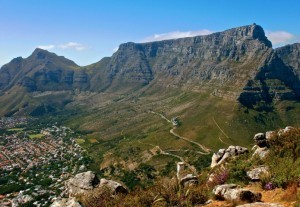 Four days. A mere four days my American friends had to spend in the New York Times’ #1-rated city to visit in 2014, and it was my privilege to be their host and resident tour guide. After living in Cape Town for a decade, my love for the diverse metropolis runs hot through my veins. Though a native to West Michigan, Africa is now in my blood.
Four days. A mere four days my American friends had to spend in the New York Times’ #1-rated city to visit in 2014, and it was my privilege to be their host and resident tour guide. After living in Cape Town for a decade, my love for the diverse metropolis runs hot through my veins. Though a native to West Michigan, Africa is now in my blood.
With only 96 hours to mold and shape, I was determined to make the most of each tick of the clock, to fashion the minutes into a masterpiece that would not soon be forgotten.
They came in October, my favorite month in South Africa, with skies as blue as robins’ eggs. Summer southern hemisphere temps, but not yet the scorching heat and congested beaches that descend with the December holidays.
As an appetizer, we kicked off the visit with a scenic drive to the rolling winelands of the northern suburbs. Cheese and wine tasting, African sun pinking our cheeks.
Over the course of the next days, we hit the major breath-taking attractions.
Piling into a borrowed VW kombi, we drove the winding coastal roads to the ends of the earth — Cape Point, with 270 degrees of undulating, endless ocean, and lumbering baboons and regal ostriches standing as sentries on the fourth point of the compass. Then home for a dip in the pool and a good ol’ S’African boerewors braai, complimented by the staple pap and spicy chakalaka.
Had the white tablecloth of clouds been cooperative and cleared temporarily, a cable car ride to the top of Table Mountain, one of the ‘new seven wonders of nature,’ would have been essential. Sadly, even a hike up the neighboring Lion’s Head didn’t materialize, but the unseasonable clouds did break enough for the more adventurous to paraglide off its base, soaring over Sea Point and the shallow, chilly Atlantic.
A drive up the curvy bends of Signal Hill was rewarded by panoramic views of the bustling city bowl, the majesty of Table Mountain and Devil’s Peak, the historic Robben Island, and Green Point Stadium, now exhaling unobtrusively after a steady stream of blasting vuvuzelas during the 2010 FIFA World Cup.
We passed through the wooded serenity of Newlands before strolling the cobblestone paths of Kirstenbosch Botanical Gardens, protea and birds of paradise prominently royal among the diversity of fauna and flora. Many a visitor have mused it must have been the Garden of Eden.
We couldn’t let our friends leave without a romantic outdoor lunch at The Africa Cafe — a bit pricy, but a ‘must stop’ for tourists. The boldly-colored restaurant prides itself on traditional dishes and tapas from all over the continent. A blender of languages as varied as the menu zoomed and swirled on the sidewalk, from Afrikaans to Xhosa, mini-bus taxi drivers rallying up customers with shouts and hollers emanating over pumping Kwaito beats through open passenger windows. Signature Kaapstad.
Inhaling the salty air of Camps Bay, with the peaks of the Twelve Apostles standing tall and proud in the background, like butlers in tuxedos, ready to serve, we savored the creamy coolness of our Sinnfull ice cream — best in town.
Another day without blemish spent to the fullest in the Mother City.
For the grand finale, we ventured along the Garden Route on the southern coast, ninety minutes to Hermanus, the whale capital of S’Africa. Stopping off at Betty’s Bay on the way, camera shutters clicked left and right, capturing both African penguins and southern right whales in one shot from the snaking, wind-blown boardwalk.
Hermanus was gloriously picturesque. After a leisurely walk along the stone paths carved into coastline cliffs, we hugged our goodbyes into the sun-kissed sea air, glossy, frolicking whales waving farewell just meters away.
The time was up; the sculpted masterpiece was complete.
About the Author: Kate Motaung grew up on the shores of Lake Michigan before spending ten years in Cape Town, South Africa. She spends her days relying on the Lord’s grace to support her South African husband in his ministry and homeschool their three children.
Thank you for reading and commenting. Please enter our next Travel Writing competition and tell your story.
The post Four Days to Sculpt a Masterpiece in South Africa appeared first on We Said Go Travel.
Wishboats and Lighthouses in Maine
I am not a good traveler. I get car sick on mountainous roads, I don’t sleep well in unfamiliar places, and I am grouchy if I don’t eat on time. So when my college-aged daughter told me she wanted to spend her summer internship at a camp in Casco, Maine, my first thoughts were “Oh, maybe we can visit.” Then they were “Ohh…”
The end of the school year always left me exhausted, and I wasn’t excited about traveling anywhere. The protective mom in me also wanted to say no. My daughter had spent the last year battling an undiagnosed illness. She finally convinced me the internship would be a good experience, put her job on hold, and took off for Maine. My husband and I followed for a visit a month later.
From Atlanta, we flew into Boston, picked up a rental car, and headed up the coast to Maine. After we dropped our luggage at a hotel in Portland, we drove north to the camp. We zig-zagged down country roads and fell in love with the small towns and picturesque farmhouses. Camp Sunshine is nestled beside Sebago Lake on 23 acres of beautiful forest land. We pulled up to the activity building, and I was immediately impressed.
To call it a camp is a misnomer. The sprawling campus includes all the outdoor activities normally associated with a camp, but it also includes a medical clinic and a physician’s residence. The children who come to Camp Sunshine have life-threatening illnesses. Their families come for support, and the children come for recreation. Instead of dormitories there are family suites, a nursery for the little ones and a volunteer living center. There are handicap equipped playgrounds and an indoor pool. It is a safe retreat for the whole family.
At my daughter’s request, we had planned our visit for the last night of a session. She had been telling us about the children during her weekly phone calls, but to see their struggle in person was something else. The family we joined for dinner had a daughter undergoing chemotherapy. Their daughter and mine had bonded over arts and crafts. Here, they told us, they could relax knowing she had the best of care and her own counselor. Here, chemo ports and a lack of hair were considered normal.
After dinner, the children performed their skits and sang their camp songs, faces smiling and families laughing. At dusk we made our way down to the pond for the Wish Boat ceremony. Each child had carefully decorated a little sailboat with wishes for the future—life, hope, dreams. Families gathered on the edge of the pond and shared their wishes out loud. As I watched them light the candles on the boats and launch them on the water, I prayed for one thing for their families. Time. Time to watch their children grow. Time to experience life.
There were tearful goodbyes that night as counselors hugged children, while parents hugged new found friends. Promises of “See you next year.” For the three of us, it was a somber ride back to the hotel. Time had become more precious.
We packed a week’s worth of sightseeing into three days. Our daughter crashed in the same hotel room and caught up on the latest news. The boutiques in the Old Port District and the outlets in Freeport were a shopping girl’s dream. We felt like locals as we cheered on the Portland Sea Dogs at a baseball game.
We visited the historic lighthouse at Fort Williams Park. The Portland Head Light sits on the harbor of Casco Bay. Sunshine and blue skies created a picture perfect setting. We strolled on the rocky shore and marveled at those brave enough to swim in the cool waters. Lunch was a picnic of lobster rolls, carefully guarded from the marauding seagulls.
We ended our days with more seafood down on the wharf. All too soon, it was time to take my daughter back to camp amid tearful goodbyes and her promise of “I’ll see you in a couple of weeks.”
That trip to Maine was a turning point for both of us. One of the camp physicians diagnosed my daughter with gluten intolerance, a manageable illness, and the internship influenced her decision to pursue a career in Human Services.
I have always loved lighthouses. When I see one now, I am reminded of the candles on those tiny sailboats and the time we have with our families. I am still not the best traveler, but I travel. My children live on opposite sides of the United States. Wherever they are, I want to experience their world. Travel gives me time with them. Time with no regrets.
About the Author: Ann Hendrix. After 31 years of teaching, I retired to pursue an interest in writing. I am a Military Mom-In-Law, volunteer English teacher and seamstress who finally has time to travel. Someday I hope to return to Camp Sunshine, but this time as a volunteer.
Thank you for reading and commenting. Please enter our next Travel Writing competition and tell your story.
The post Wishboats and Lighthouses in Maine appeared first on We Said Go Travel.
Spain: Tapas Crawling in Granada
Aside from all of the history and beauty of Granada, there is one more thing that makes it unique……FREE Tapas! Granada is one of the last spots in Spain in which tapas are served for free when you order a drink. Tapas come in a variety of sizes and can be hot or cold. And, with each successive drink, the tapas get more elaborate.
‘El tapeo’ is what the Spanish call going from bar to bar to eat tapas and it is one of the best ways to get to know Granada. It’s a great way to try out the specialties while exploring the streets. Tapa crawling is much more than having a beer, it’s an art. It’s a way to understand the Granadian way of life, to understand the people and their traditions.
Tapas Crawls can happen in any area of the city and I started mine on the Campo de Principe in the Realejo, Granada’s old Jewish Quarter.
Stop 1:
Taberna Tofe – I sat outside and ordered a glass of Rioja and it came with a small dish of paella.
Stop 2:
La Ninfa – I sat inside this charming Mediterranean restaurant whose walls are covered with traditional ceramics. I ordered a glass of Ruedo (white wine) and it came with olives and navajas (razor clams) cooked in olive oil (and tasted like clams).
Stop 3:
Los Martinetes – I ordered a glass of Sangria which was served with Migas, a traditional dish of bread crumbs with pepper, garlic and blood sausage.
This entire Tapas Crawl cost less approximately $12.
A few other noteworthy Tapas stops are:
Bar Kiki – Located in the Plaza de San Nicolás in the Albaycin, Bar Kiki has a small interior bar but a huge patio out front. Grab a seat and order a Gin y Tonica (gin and tonic) and enjoy a tapa or two. The place is always packed and local musicians pass through and play.
Bodegas Castaneda - Located near Plaza Nueva, this bar is an institution among locals and tourists. With salamis hanging from the ceiling and a large selection of wines, the only challenge will be getting a seat or spot at the bar.
Rincon di Rodri – Three quarters of a mile south of the Plaza Nueva is this very popular seafood restaurant. Filled with locals, it was packed and the tapas portions are very large. I ordered two glasses of white wine and was served battered fish and then sautéed mushrooms over fries.
The post Spain: Tapas Crawling in Granada appeared first on We Said Go Travel.
Lost in Vietnam and Happy About It
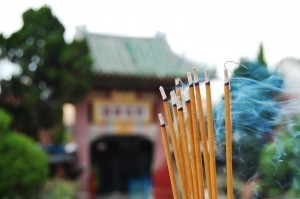 Ask me a year ago for travel advice, and I would have said:
Ask me a year ago for travel advice, and I would have said:
I have all the answers.
I know the perfect way.
What is good for me is good for everyone.
Ask me now, and I know better.
All I know is that I’ve figured out what works for me.
I was lost in Vietnam, completely alone on a rainy day, and I had arrived at the wrong bus station. Lugging around my faded blue backpack, I wandered the gray streets on this dark, damp day. I had lost my pack cover in New Zealand – it blew off in a gust of wind on a hiking trip – and I knew that my backpack was getting wet.
A few years ago, in this situation, maybe I would have been worried, but now I was ecstatic. Excited to be lost.
How would I find my way out of it? What creative solution would my intuition invent? How would the universe conspire to help me?
I sat down at a tiny stall and ordered a bowl of whatever the guy next to me was having, which turned out to be the best noodle soup of my life. Next I attempted to ask the shopkeeper for help.
Of course, she didn’t speak English, and looked at me as if I were a space alien. I’ve gotten that look very often while traveling. Sometimes that look freaks me out, but in that moment I loved it, I lapped it up. I was special! Different! Had she ever seen anyone like me before?
She called her friends over – none of whom spoke English. Luckily I had written down the name of the bus station I was trying to find, and I showed it to the group gathering around me.
While I slurped my noodles, more and more people came over, trying to help, offering their opinions. Amongst these strangers, I felt safe.
Even if I missed my bus, it wouldn’t be the end of the world. I wouldn’t die. Accepting my situation, I sat back and enjoyed the chatter of this group of Vietnamese men and women who were trying to help me.
Out of nowhere a slightly chubby man appeared, driving a beat-up old motorbike. My new friends motioned for me to get on.
Here’s where my brain started questioning. Despite my initial trust in these strangers, suddenly I thought: “What if he takes you somewhere else? What if he rips you off? What if these people are conspiring against you? …”
What complete and utter bullshit, my heart laughed, pushing away the negativity. The fleeting thoughts dissipated. “You can trust them, get on the bike!” said my heart.
So I did.
I thanked all the people – one of two phrases I could say in Vietnamese – and climbed on the bike. They even found me a big plastic bag to put over my drenched backpack.
I close my eyes now, sitting at my desk in California, and I can transport myself back to the time when I was holding on to this chubby man’s love handles, the wind and gentle rain pecking my face, the gray streets and sky all around me.
I paid him 100,000 Vietnamese dong, about 5 USD. Based on his reaction I think this was more than enough, and I was happy to make his day!
Trust. It’s a key word for me during travel, and life. Trust. During these situations, I remind myself: Accept your situation. Be in the moment. It won’t last forever.
Trust that it will all work out, and it will.
Thank you for reading and commenting. Please enter our next Travel Writing competition and tell your story.
The post Lost in Vietnam and Happy About It appeared first on We Said Go Travel.
February 19, 2014
Stuck In The Zaire Mud
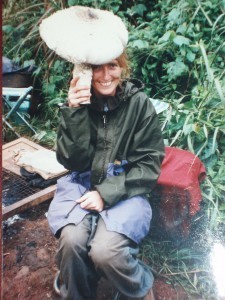 Time stands still when you are stuck. We had been stuck before, delayed by a day or two a couple of times but this was different. The road through Zaire to Uganda was a red dirt corridor in the jungle with frequent dodgy bridges and mud holes. A mud hole big enough to suck an ex-army truck up to the axle is not easy to escape from. Our driver had avoided dumping the whole truck, we had one side on solid ground which was better than nothing. With sparse traffic we couldn’t rely on a truck coming along and winching us out, we were on our own.
Time stands still when you are stuck. We had been stuck before, delayed by a day or two a couple of times but this was different. The road through Zaire to Uganda was a red dirt corridor in the jungle with frequent dodgy bridges and mud holes. A mud hole big enough to suck an ex-army truck up to the axle is not easy to escape from. Our driver had avoided dumping the whole truck, we had one side on solid ground which was better than nothing. With sparse traffic we couldn’t rely on a truck coming along and winching us out, we were on our own.
Our route had taken us overland from London through to the heart of Africa, our truck and our bodies were fatigued. Uganda was the promised land – showers, restaurants, cold drinks, showers, hotels, shops and, did I mention showers? The jungle had been an amazing adventure but we were very ready for a change of scenery, a chance to restock and recharge.
We were there for nearly a week, I think – as I said time stands still when you are stuck. We set up a camp kitchen on a small bridge and set to work getting out of Zaire. We all took turns digging and bucketing water but it was immediately apparent that the men were more effective at clearing out the soggy earth under the truck so the women took on the responsibility of meals and keeping the fire going. However, when the men couldn’t fit into tight spaces under the truck the women were able to squeeze under and clear mud gumming up the works as well as scooping water out of the hole with buckets. Equal rights aside, survival meant utilising the available skills to our best advantage, plus we wanted a decent meal in the evening.
The guys weren’t bad cooks but our food supplies were limited and they would be the first to admit the women could make more out what we had. Without markets our meals were made from the trucks dry stores and whatever we could buy from the locals. Once word got around that we had camped on the track villagers came to sell whatever spare food they had, their visits always cheered us up as well as provided fresh food.
We ate a lot of mushroom and manioc soup fortified with rice but as time went on we began to worry – how long could everyone keep working so hard without a solid diet? We made it through with careful planning and rationing – but only just.
Life shrank down to the bare essentials during those days; meals to prepare, stores to audit, fires to keep going, cleaning the bridge kitchen. For the men it was even more basic; eat, sleep, dig. Each day was the same, they all merged into mud, demoralising daily rain and monotonous meals. Staying healthy was a priority, illness or injury would have been potentially disastrous but physical survival was not our only concern.
The mental and emotional strength required to get through those days was huge. Our group was large enough so that when some felt dispirited others were in a more positive mood, we always had balance. We carried each other through knowing that at some point we would all need encouragement and support before we got on the road again.
It’s a strange feeling, stuck, days away from any practical help not knowing what was going on in the world. We had to adjust our outlook to accommodate the very narrow confines of the situation. The environment regulated our day – waking at dawn, working all through the daylight hours, lighting fires and eating between the afternoon rain and dusk. Surrounded by thick jungle we couldn’t put up tents so we slept on the track or in the listing truck. Sleeping was difficult despite us all being exhausted. Cocooned in the solid darkness and humidity was cosy but the stars were startling and hoots, cackles and rustling from the jungle made it hard to relax adding to the pressure of a heavy workload.
The time spent in limbo was not wasted, we bonded together tighter than we had been before, uncovering our individual strengths and holding each other steady through hard times. Zaire taught us all that even when we’re stuck, bored, frustrated and scared we are still on a journey of discovery.
When we got the truck on the road again there weren’t any high fives, we had narrowly avoided a very serious situation and we were too relieved and wary of the road ahead to celebrate. We continued on our way to Uganda subdued, hungry, tired and filthy dreaming of showers, restaurants, cold drinks, showers, hotels, shops and, did I mention showers?
About the author: Debra Youthed lives in New Zealand and has travelled mainly in Africa, the Middle East and Asia. An award winning fiction writer, Debra is extending her writing to include travel writing, creative non fiction and poetry.
Thank you for reading and commenting. Please enter our next Travel Writing competition and tell your story.
The post Stuck In The Zaire Mud appeared first on We Said Go Travel.
A Visit to the Land of Time in Jordan
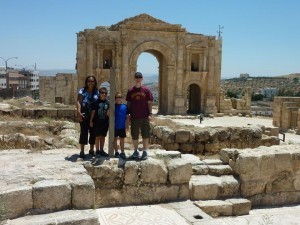 When I was in college I always said I would travel when I found time. Textbooks have now been exchanged from Dr. Seuss. Grabbing a latte has been replaced with grabbing sippy cups for my toddlers. The time to travel became a distant memory of a young idealistic mind. My adult mind was unable to comprehend the possibility of living with no regrets and refused to accept the challenge to live fully.
When I was in college I always said I would travel when I found time. Textbooks have now been exchanged from Dr. Seuss. Grabbing a latte has been replaced with grabbing sippy cups for my toddlers. The time to travel became a distant memory of a young idealistic mind. My adult mind was unable to comprehend the possibility of living with no regrets and refused to accept the challenge to live fully.
Then it happened. Time became my enemy. Time, or lack thereof, was the single focus of my day. Twenty-four hours simply was not enough. How can anyone do it all and still keep a smile on their face? This predicament lasted for many years. Each year my husband and I would dream of all the places we wanted to visit. Lamenting over all the fun we would have when the kids were older. Then it finally dawned on us. What are we waiting for?
July 4th 2013 our family of four boarded a plan to visit the land of time. Our goal was to return to the place where time has been forever changed. Over 2000 years ago one man walked the Earth with such an amazing mastery of time that his existence changed how we record time. B.C. is an abbreviation for “Before Christ.” and A.D. for “anno Domini” or “After Death”. Thirty-six hours and three airplanes later we landed in Jordan and spent 15 days following the footsteps of Jesus to Israel.
Two battle-weary adult and two sleep deprived giddy children stumbled into our first hotel at 1AM Jordanian time, a full two days after we left our home. Our lesson in time had already begun! Lesson 1: Sleep must occur within every 24 hours. When you try to stay up and function much longer than that, you end up laughing at hotel shuttle drivers until your side hurts. Or worse, you find yourself sleeping soundly with your head resting on the nice Palestinian man sitting on the shuttle with you.
It’s hard to believe how much time there is in a day when you turn your day over to a tour guide! Our trip started 8 hours after we crashed in the hotel. Moving along the desert plains of Moab in the heat of summer proved to be real challenge. The hot sun was relentless on Mt. Nebo, but the view across the Jordan Valley and the Dead Sea was enough to make time stand still. In that moment, the hours on the planes, the airport hassles, and the language barriers were all forgiven. Lesson 2: Time cannot be created or destroyed, it can only be experienced.
The next day we journeyed up to mountain fortress of Petra. Our children marveled over the numerous caves along the path into Petra. We let them to ride on the back of a donkey up the 700+ steps to the monetary. Hours were spent in the dust and dirt. Leg muscles ached. Bellies were empty. Sweat poured down our faces. At the top we celebrated with bottles of water and rich local cookies. Sitting thousands of miles away from everyone we know, we found a place to simply be. No agenda. Our only goal, get to the top. We did it and it felt really spectacular. Lesson 3: Celebrating an accomplishment is never wasted time.
Jordan was a hidden gem of culture and adventure, but our journey had to move us onward to Israel. We entered the border crossing area and exited into a new world. The Holocaust Museum took us back to a time of great pain for a people and a nation. From there we visited Bethlehem, Jerusalem, Mount of Olives and then on to the Garden of Gethsemane. It is here that drops of sweat like blood fell. I’d never been under pressure great enough to produce this physiological anomaly, but I have been under the constraints of a life lived on borrowed time. Lesson 4: Spending too much of today focusing on the past or the future is a waste of time. Life is to be lived in the moment.
Our time in the land of time concluded at Golgotha and the Garden Tomb. We each took a turn looking inside the place where Jesus’ body had been laid. As I exited the tomb, I also exited my misunderstanding of time. Time was no longer my enemy, but a gift I was ready to enjoy. Time was an invitation to spend my days exploring all life has to offer, not for some far away date in the future but daily. Time was an offer I simply could not refuse. Lesson 5: Time is what you make it, so make it amazing.
About the Author: Saundra Dalton-Smith is a Coffee-loving, wife, mom, and grace seeker.
Thank you for reading and commenting. Please enter our next Travel Writing competition and tell your story.
The post A Visit to the Land of Time in Jordan appeared first on We Said Go Travel.
Never Rue a Meal: Finding High-Quality Street Food in France
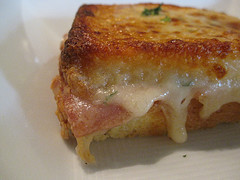 The French, they love their food. You can see this in the quality and freshness of the ingredients they use to prepare their meals. They don’t cut corners either when it comes to their artisan street food either, but if you know where to look and where to avoid you can steer clear of disappointment.
The French, they love their food. You can see this in the quality and freshness of the ingredients they use to prepare their meals. They don’t cut corners either when it comes to their artisan street food either, but if you know where to look and where to avoid you can steer clear of disappointment.
Lunches and dinners in France are leisurely affairs. They often last hours, and the quality of the carefully prepared dishes is an important factor. That’s not to say that you can’t find fast street food in the cities of France just as you would in any other country. Look in the right places and you can find some of the most delicious crepes, filled baguettes, sandwiches and savory snacks.
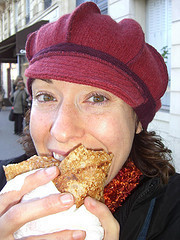 In the major French cities you’ll no doubt come across street vendors selling prepared sandwiches, filled croissants and a range of warm snacks near the Paris hotels, transport links and popular tourist attractions. Avoiding them is a good way to avoid food poisoning, which can seriously put a crimp in your vacation while the price puts a dent in your wallet. Try to follow the locals if you can; if a place looks busy and has a large queue of customers, all those people can’t be wrong!
In the major French cities you’ll no doubt come across street vendors selling prepared sandwiches, filled croissants and a range of warm snacks near the Paris hotels, transport links and popular tourist attractions. Avoiding them is a good way to avoid food poisoning, which can seriously put a crimp in your vacation while the price puts a dent in your wallet. Try to follow the locals if you can; if a place looks busy and has a large queue of customers, all those people can’t be wrong!
One of the best places to find artisan-quality street food is at the many open-air and covered markets. The sandwiches, croissants and baguettes will be baked on the same day and you can choose from a range of French cheeses and ham. Keep an eye out for the fresh quiches and the huge variety of specialty sausages, as well as the popular cheese-covered sausages sold at the markets. The markets are also the place to go for the freshest seafood snacks and you can even pick up some sushi in many of them.
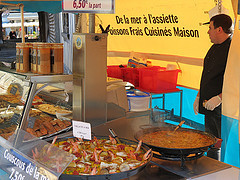 If you want to be sitting while you eat then remember that it will cost more to sit outside at a sidewalk table; standing at the bar costs less. Again, look for the cafes that are busy with locals, especially during lunchtimes. Tasty, quick and inexpensive meals include the croque monsieur, which is basically two slices of warm crust-less bread filled with Gruyere cheese and lean ham. For something equally simple, quick and inexpensive, choose an omelet served with pommes frites and a salad.
If you want to be sitting while you eat then remember that it will cost more to sit outside at a sidewalk table; standing at the bar costs less. Again, look for the cafes that are busy with locals, especially during lunchtimes. Tasty, quick and inexpensive meals include the croque monsieur, which is basically two slices of warm crust-less bread filled with Gruyere cheese and lean ham. For something equally simple, quick and inexpensive, choose an omelet served with pommes frites and a salad.
Images by magerleagues, kurmanstaff and sheerluck7 and tornatore, used under Creative Commons license.
About the Author: Hugh Jacobs is a travel writer and self-confessed Francophile who has a particular interest in the works of Alexandre Dumas. When not indulging in French culture, he likes to wind down with some jazz, his favorite musician being Duke Ellington.
The post Never Rue a Meal: Finding High-Quality Street Food in France appeared first on We Said Go Travel.
My Little Italy
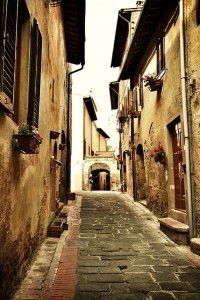 While visiting Italy twelve years ago, I learned that using my time wisely in a new place didn’t necessarily mean getting a lot accomplished each day. There was much to see and do in each city my husband and I visited, however, it was not the amount of popular sights we trekked to that made us feel like our trip was worthwhile. Instead, I felt more gratified after spending the day navigating unfamiliar streets, buses, and train stations; communicating with people who didn’t speak my language; noticing the differences in architecture and dress and interactions of the locals.
While visiting Italy twelve years ago, I learned that using my time wisely in a new place didn’t necessarily mean getting a lot accomplished each day. There was much to see and do in each city my husband and I visited, however, it was not the amount of popular sights we trekked to that made us feel like our trip was worthwhile. Instead, I felt more gratified after spending the day navigating unfamiliar streets, buses, and train stations; communicating with people who didn’t speak my language; noticing the differences in architecture and dress and interactions of the locals.
There were so many small and unique details packed into each day, and I felt like the beauty of my time there was simply in noticing them.
One of my favorite experiences in Italy was the day we arrived in Rome. After finding our pension, and taking the rickety, old-fashioned elevator up to the fifth floor to drop off our backpacks in our room, my husband and I headed out to explore the city. We took the address of our pension along, so we could find our way back, and then hopped aboard the first bus we saw, throwing caution to the wind. Our ride was a lurching and sweaty introduction to the city, nevertheless, we would have stayed on there much longer if our stomachs weren’t grumbling from hunger.
We hopped off at the next stop, figuring there must be some place nearby to eat, but soon realized the area we had landed in was not terribly commercial. We went into the only store we could find—a tiny corner grocery mart—and mimed our request for a ristorante.
The store clerk motioned us outside and around the corner, or so we thought until we ended up in a desolate cobblestone alley. I was already backtracking, scanning for another bus to flag down, when my husband said, “Let’s just look.”
I nervously followed him down the darkening alley, and sure enough, there was an unmarked glass door halfway along, with twenty or so cloth-draped tables inside. When we entered, we were the only customers, so we tried to ask in our slowly-improving English/Italian mash-up if they were actually open. The waiter nodded many times and seated us. Before long, a group of men in suits entered and sat at a long table together. They were of mixed ages and wrapped their arms over each other’s shoulders as though they were family. We enjoyed watching them and speculating on whether they were actually family, or a group of businessmen. My husband even suggested the mafia.
Soon the wine came, and then the bread and pasta. We were getting quite full, so were surprised when our waiter, in broken English, asked us what we would like for our main course. I guess a filling pasta meal is only an appetizer in Italy! Even though the waiter looked at us a little funny, he agreed that we could skip the main course and go straight on to dessert. The meal wasn’t cheap, but the atmosphere was one of the richest memories we brought back from our trip. That, and the memory of the best tiramisu we have ever tasted.
Reflecting on this trip never ceases to remind me of all the little moments in life that can be so impactful if I only take notice of them. Because of this, even though Italy has a vast amount of land and architecture and historic sights to see, I’ll always think of it as My Little Italy.
About the Author: Denise Jaden is the author of critically-acclaimed fiction for young adults and nonfiction for writers. Besides writing, she enjoys traveling, homeschooling her young son, and dancing with a Polynesian dance troupe.
Thank you for reading and commenting. Please enter our next Travel Writing competition and tell your story.
The post My Little Italy appeared first on We Said Go Travel.
We Said Go Travel
We Said Go Travel is a global community of over sixteen hundred writers with articles from every continent.
Stories are shared with photos and video from a perspective of the transformative power of travel. We Said Go Travel has hosted live and online events as well as travel writing contests around the world. ...more
- Lisa Niver's profile
- 57 followers


